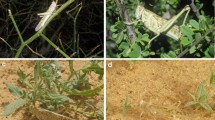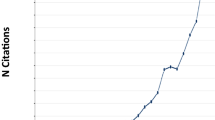Abstract
The ravages created by desert locusts (Schistocerca gregaria) on livelihoods and food security have been known and feared for thousands of years. Under the right conditions, the usually solitary insects suffer a radical transformation in terms of their body size, color, brain, and their behavior shifts to gregarious. In their gregarious form, locusts can eat about the equivalent of their body weight (2 g) per day. FAO calculates that a swarm of just 1 km2 can consume as much food as would be eaten by 35,000 people in a single day. Their highly developed migratory capacity, with the ability to travel up to 150 km per day (they are carried by winds), allows them to easily go across borders and even continents.
Mathematical models have been developed to model different aspects of desert locust dynamics, from demographics to prediction of breeding grounds. Given the central importance of climatic conditions for desert locusts’ breeding and reproduction, temperature and humidity predictions are key variables. Likewise, given that locusts rely on wind for their transportation, wind velocity, direction, and temperature are also key variables in prediction models. The chapter describes the threats posed by locusts, the responses developed to contrast them, and the types and roles of mathematical models in these responses.
Access this chapter
Tax calculation will be finalised at checkout
Purchases are for personal use only
Similar content being viewed by others
References
Brasav, P.: Locusts are a plague of Biblical scope in 2020. Why? And what are they exactly? Interview with Rick Overson (2020). https://www.npr.org/sections/goatsandsoda/2020/06/14/876002404/locusts-are-a-plague-of-biblical-scope-in-2020-why-and-what-are-they-exactly
FAO, n.d.. http://www.fao.org/ag/locusts/en/archives/1032/index.html
Lecoq, M.: Desert Locust Threat to Agricultural Development and Food Security and FAO/International Role in its control. In: Paper Presented in a Symposium on Desert Locust Control at the Eighth Arab Congress of Plant Protection held in El-Beida, Libya, October 12–16 2003
FAO: Ending extreme poverty in rural areas – Sustaining livelihoods to leave no one behind. FAO, Rome (2018)
FAO, n.d. a http://www.fao.org/emergencies/emergency-types/plant-pests-and-diseases/en/
FAO: The impact of disasters and crises on agriculture and food security: 2021. FAO, Rome (2021). https://doi.org/10.4060/cb3673en
GNFC: Global Report on Food Crisis. Global Network Against Food Crisis and Food Security Information Network. FAO, Rome (2020)
Akimenko, V., Piou, C., Shevchenko, T.: Two-phase Age-Structured Model of Solitarious and Gregarious Locust Population Dynamics, https://arxiv.org/ftp/arxiv/papers/1706/1706.05256.pdf
Kimathi, E., Tonnang, H.E.Z., Subramanian, S., et al.: Prediction of breeding regions for the desert locust Schistocerca Gregaria in East Africa. Sci. Rep. 10, 11937 (2020). https://doi.org/10.1038/s41598-020-68895-2
Wilson, K., Thomas, M.B., Blanford, S., Doggett, M., Simpson, S.J., Moore, S.L.: Co** with crowds: density-dependent disease resistance in desert locusts. Proc. Natl. Acad. Sci. USA. 99(8), 5471–5475 (2002). https://doi.org/10.1073/pnas.082461999. PMID: 11960003; PMCID: PMC122793
Cressman, K.: Role of remote sensing in desert locust early warning. J. Appl. Remote Sensing. 7, 075098 (2013). https://doi.org/10.1117/1.JRS.7.075098
Pekel, J., Ceccato, P., Vancutsem, C., Cressman, K., Vanbogaert, E., Defourny, P.: Development and application of multi-temporal colorimetric transformation to Monitor Vegetation in the Desert Locust Habitat. IEEE J. Selected Top. Appl. Earth Observ. Remote Sensing. 4(2), 318–326 (2011). https://doi.org/10.1109/JSTARS.2010.2052591
Cressman, K.: Senior Agricultural Officer at FAO, personal communication, (2021)
Stein, A.F., Draxler, R.R., Rolph, G.D., Stunder, B.J.B, Cohen, M.D., Ngan, F.: NOAA’s HYSPLIT Atmospheric Transport and Dispersion Modeling System, pp. 2059–2077. (2015). https://doi.org/10.1175/BAMS-D-14-00110.1
Author information
Authors and Affiliations
Corresponding author
Editor information
Editors and Affiliations
Rights and permissions
Copyright information
© 2022 The Author(s), under exclusive license to Springer Nature Switzerland AG
About this chapter
Cite this chapter
Villarreal, M. (2022). Desert Locusts: Can Mathematical Models Help to Control Them?. In: Emmer, M., Abate, M. (eds) Imagine Math 8. Springer, Cham. https://doi.org/10.1007/978-3-030-92690-8_26
Download citation
DOI: https://doi.org/10.1007/978-3-030-92690-8_26
Published:
Publisher Name: Springer, Cham
Print ISBN: 978-3-030-92689-2
Online ISBN: 978-3-030-92690-8
eBook Packages: Mathematics and StatisticsMathematics and Statistics (R0)




